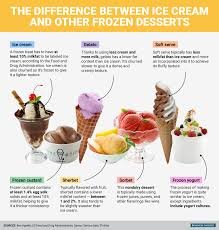A viral Instagram video posted by food vlogger @planetashish has been capturing the attention of dessert enthusiasts around the world. The video provides an intriguing behind-the-scenes look at a local manufacturing unit, showcasing the step-by-step process of creating chocolate-coated ice creams or frozen desserts. However, one particular moment in the video has sparked a lively conversation among viewers—the addition of copious amounts of oil into the chocolate paste mixture.
With over 42,000 likes and counting, @planetashish’s video has undoubtedly struck a chord with dessert aficionados. The mesmerizing footage reveals the artistry and precision involved in crafting these beloved summer treats. As the video unfolds, viewers witness the transformation of raw ingredients into a delectable frozen delight. From the initial mixing of ingredients to the final chocolate coating, each step showcases the dedication and expertise of the skilled dessert makers.
However, it is the addition of a substantial amount of oil into the chocolate paste that has ignited a passionate debate in the comments section. The inclusion of oil in the mixture raises questions about the traditional composition of ice cream versus frozen desserts. To provide clarity, it is important to understand the fundamental differences between the two.
In simple terms, ice cream can be described as a milk or dairy-based frozen dessert. It typically consists of a mixture of milk, cream, sugar, and flavorings. The key defining characteristic of ice cream lies in the use of dairy fat, which contributes to its rich and creamy texture. The process involves churning the mixture while freezing it, which creates air pockets and prevents the formation of ice crystals, resulting in a smooth and velvety consistency.
On the other hand, frozen desserts, while similar in appearance, often deviate from the traditional ice cream formula. Instead of using dairy fat, they employ alternatives such as vegetable fat or milk solids. These substitutions make frozen desserts more accessible to individuals with dietary restrictions or those seeking non-dairy alternatives. By utilizing different fats or milk solids, manufacturers can replicate the texture and flavor profile of ice cream while catering to a broader consumer base.
Returning to the viral video, the addition of copious amounts of oil into the chocolate paste mixture suggests that the dessert being created may fall into the category of frozen desserts rather than traditional ice cream. The use of oil as a diluting agent indicates a departure from the conventional dairy-based recipe. This technique allows the chocolate to coat the outer layer of the milk-based portion of the dessert while maintaining a desirable consistency.
While some viewers may express concern or surprise at the generous use of oil, it is essential to recognize that different dessert variations exist to accommodate diverse dietary needs and preferences. The inclusion of oil in this particular process does not necessarily diminish the appeal or taste of the final product. Instead, it highlights the ingenuity of food artisans and their ability to adapt classic recipes to suit a broader range of consumers.
The conversation sparked in the comments section of @planetashish’s Instagram post demonstrates the passion people hold for frozen treats and their curiosity about the ingredients and processes involved in their creation. As consumers become more discerning and health-conscious, the demand for alternative options, such as frozen desserts, continues to grow. This evolving landscape encourages manufacturers to innovate and explore new avenues while ensuring that taste and quality remain at the forefront of their creations.
In conclusion, the viral Instagram video by @planetashish showcases the mesmerizing process of crafting chocolate-coated ice creams or frozen desserts. The addition of oil in the chocolate paste mixture highlights the unique nature of frozen desserts, which can deviate from the traditional dairy-based ice cream recipe. The ensuing conversation among viewers illustrates the evolving preferences and dietary considerations of consumers. As the world of frozen treats continues to evolve, it is essential to embrace diversity and celebrate the creativity that allows dessert enthusiasts to indulge in their favorite treats .




